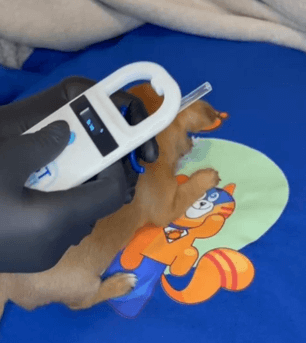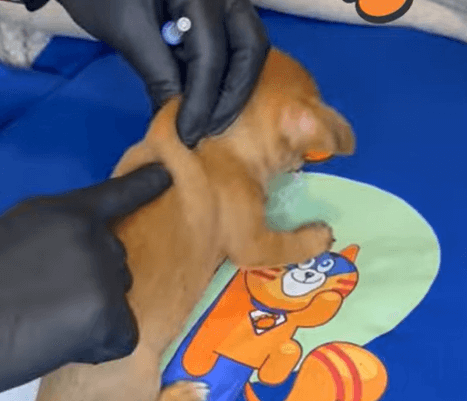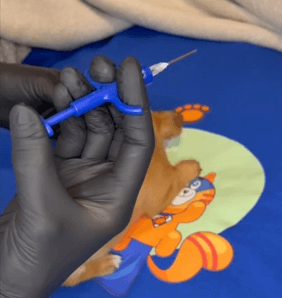How to microchip a pet: Step-by-Step Guide
Microchipping is a crucial step in responsible pet ownership, providing a permanent form of identification that helps reunite lost pets with their families. Petkey’s microchipping process ensures that pets are safely and effectively microchipped, but proper technique and registration are essential for this method to be truly effective. Watch the video below on how to microchip a pet.
Step-by-Step Guide to Microchipping a Pet

- Initial Scan for Existing Microchip
Before implanting a microchip, it is critical to first scan the pet to confirm that no microchip is already present. This ensures that the pet is completely clear and avoids potential complications from duplicate microchips.
- Confirming Microchip Details
Each microchip comes with a unique identification number. Before implantation, the microchip is scanned to verify that the number on the chip matches the corresponding sticker on the packaging. This step ensures that the correct microchip is being used for the pet.
- Placement of the Microchip

The correct placement for the microchip is between the puppy’s shoulder blades.
By gently pulling up the skin and running a finger along the spine, a natural pocket is found where the chip should sit.
It is important to keep the needle straight and positioned correctly to avoid contact with the spine or neck bones, which could cause injury.
The microchip should be implanted just beneath the skin, avoiding any muscle tissue or major blood vessels.
- Microchip Insertion

The area is then cleaned with an antibacterial wipe to maintain sterility.
The microchip needle is inserted carefully into the pocket, keeping it straight. Once inserted, the plunger is pushed to expel the microchip into the tissue. Once the needle has left the pet’s body, the entry point is then gently massaged to ensure proper placement and minimal discomfort for the puppy.
- Post-Insertion Check
The area is scanned again to confirm that the microchip is properly placed. If there is any minor bleeding, applying direct pressure will stop it.
The pet is then checked over to ensure there is no distress or adverse reaction.
The Importance of Microchip Registration
A microchip is only effective if it is registered with up-to-date contact information. Without proper registration, a microchip simply becomes an inert piece of technology with no link to the owner. If a lost pet is scanned and the chip is unregistered, it is so much harder to connect the pet to its rightful home.
Register your pet’s microchip here.
Provide your contact details and the pet’s information.
Why Professional Microchipping Matters
Microchipping should always be performed by a licensed veterinarian or trained professional to ensure safety and proper placement. Incorrect microchipping techniques can lead to microchip migration (where the chip moves from its intended location), potential injury, or ineffective scanning later on.
Professionals are trained to:
- Ensure the microchip is placed in the correct position.
- Minimizes the risk of hitting sensitive areas like the spine or major vessels.
- Use sterile techniques to prevent infection.
Microchipping is a simple yet sometimes life-saving procedure that offers security and peace of mind for pet owners. Registering the microchip is a critical step in making sure it serves its purpose. By following these best practices, you can ensure your pet has the best chance of finding its way home should it ever go missing.




